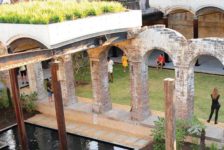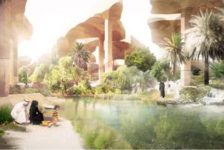Toppilansaari Park, by Atelier Dreiseitl, in Oulu, Finland. Do you happen to know what the word Toppilansaari means? Perhaps you can translate it, if you live in Finland, but for the rest of us wondering why a park would have such a name, Toppilansaari is Finnish for “Park of the Young Sailor.” As in most of the northern countries, the history of Finland and its people is closely connected with water – the Baltic Sea, the sailors, and the fishermen. Let yourself feel the ambience of the archipelago of the “land of a thousand lakes” as we take you to one of its most populous and economically hearty cities.

Masterplan of Toppilansaari Park. Image credit: Atelier Dreiseitl
About Oulu
Located 160 kilometers south of the polar circle, the city of Oulu is sheltered away at the outermost parts of the Baltic Sea. Oulu is a hub for new technology business, with world mobile, electronic, and medical technology leaders based there. As a consequence, the economic prosperity of the city has been raised enough to provoke a demand for attractive housing development providing a higher and better standard of living. See More Projects From Atelier Dreiseitl:
- How Zollhallen Plaza is Ready for a 100-Year Flood
- How Bishan Park Became “The Central Park” of Singapore
- How Tianjin Cultural Park Became a Union of Diversity
“Toppilansaari, a peninsula between the Oulu harbor entrance and the open sea, is the site of the Finnish Housing Expo 2005. The housing is laid out as a sustainable pilot project.” This is how the multicultural and interdisciplinary design team of Atelier Dreiseitl introduces you to the prime cause and general concept of the Toppilansaari Project.
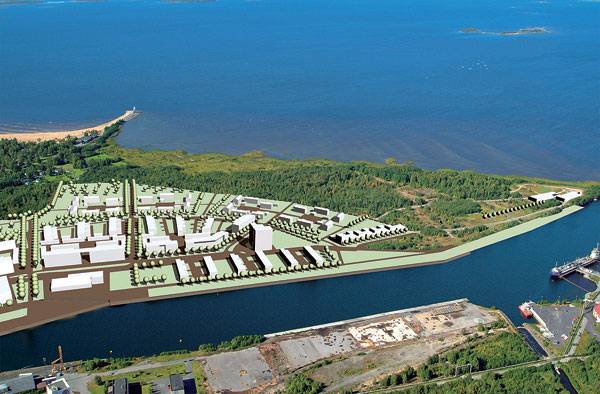
Masterplan of Toppilansaari Park. Image credit: Atelier Dreiseitl
Planning, Designing and Building with Water
The three radical lines defining the sustainable design concept aim to score three goals: economical, ecological, and analytical. Creating affordable housing that spares the natural environment and biodiversity by means of a rainwater management system is the first step in reaching those goals. Drawing information from the project about minimizing the impacts on nature caused by construction is the other key object that the team of experts put on the agenda.
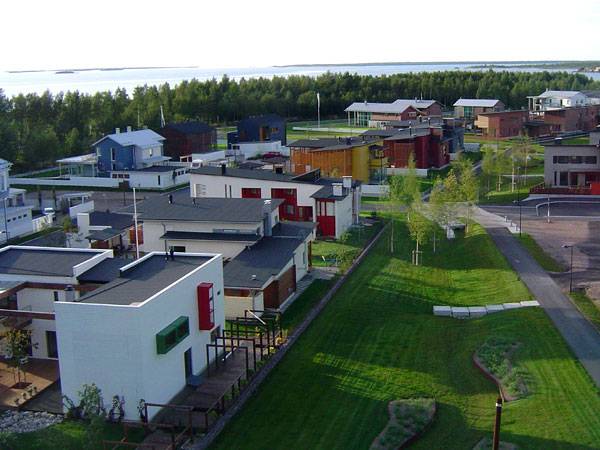
Toppilansaari Park. Photo credit: Atelier Dreiseitl
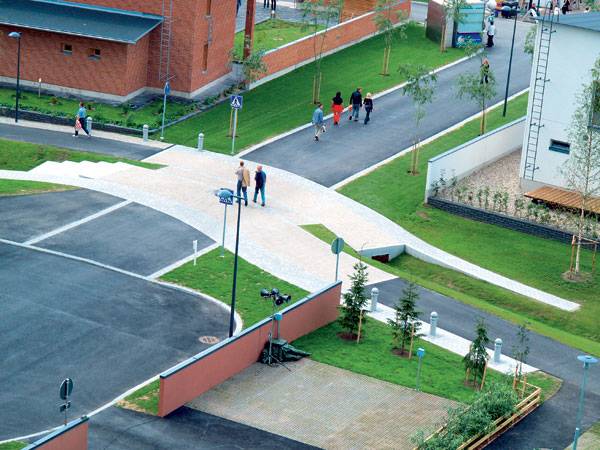
Toppilansaari Park. Photo credit: Atelier Dreiseitl
The Water Cycle of The Park
Tangentially arranged paths run parallel with the swales, carrying rainwater on its way out to the sea. Additional concrete stepping stones function as a hold-back to rain or melting water. Here comes the role of the crossings’ openings, which convey the storm water to the next swales. Runoff from the roads isn’t forgotten either – it is captured and cleaned to take part in the whole water cycle of the park.
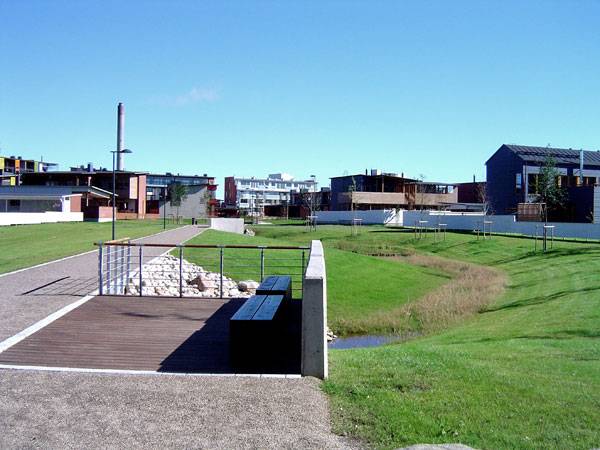
Toppilansaari Park. Photo credit: Atelier Dreiseitl
Inspired by Water
Following the understanding of planning in unison with nature, the expression of the park reminds us of the flowing language of water. The soft topography of the green lawns is designed in a slanting, tranquil manner to form natural-looking gullies. Changes in the elevation are marked by the use of varied pavement, which elegantly blends with the landscape and differentiates from it at the crossing zones. To highlight the crossing points further, the designers have concentrated the majority of native trees in several groups.
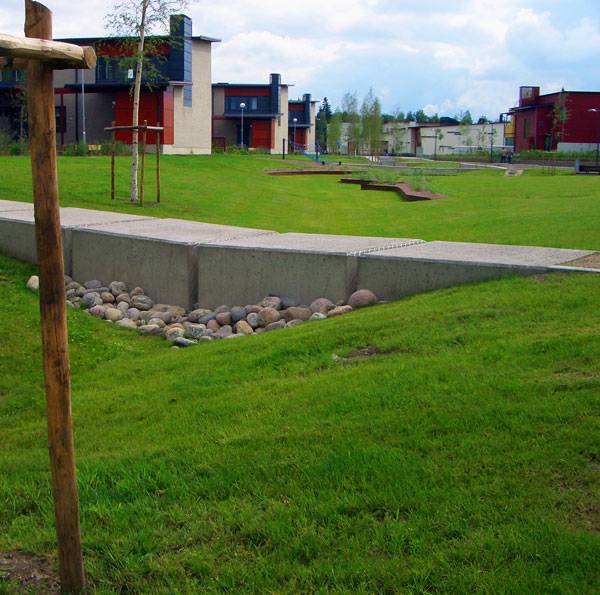
Toppilansaari Park. Photo credit: Atelier Dreiseitl
Memorial Art Installations
The theme of water finds an appearance in one more way. We already mentioned that the name of the park means “Park of the Young Sailor.” That name inspired the creation of two land art installations set at the southern and northern ends of the park. “In the southern garden, a conceptual, sunken boat is a memorial to all the young sailors who never returned to land,” the designers say. If you spend time sitting on the bench stuck on the boat, you will probably hear the low tones sung by the masts.

Toppilansaari Park. Photo credit: Atelier Dreiseitl

Toppilansaari Park. Photo credit: Atelier Dreiseitl

Toppilansaari Park. Photo credit: Atelier Dreiseitl
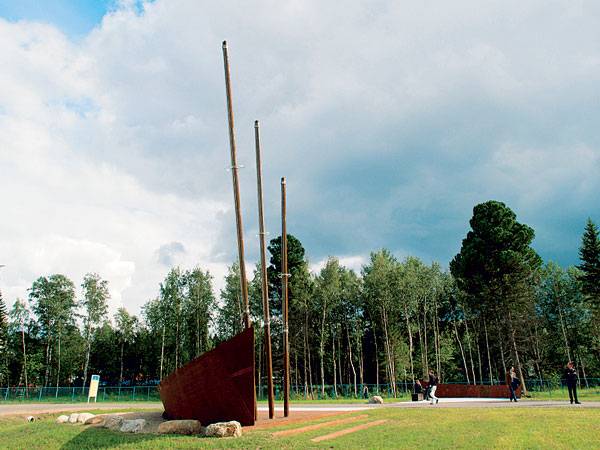
Toppilansaari Park. Photo credit: Atelier Dreiseitl

Toppilansaari Park. Photo credit: Atelier Dreiseitl
Celebrating the Past and the Present
Having learned about this Finnish park that embraces the concept of stormwater management, it is time to draw a conclusion. So what is your opinion? Did the project succeed in creating a balanced, undisturbed environment coexisting with the built housing units? Did the designers deliver the best solution for a resilient city?
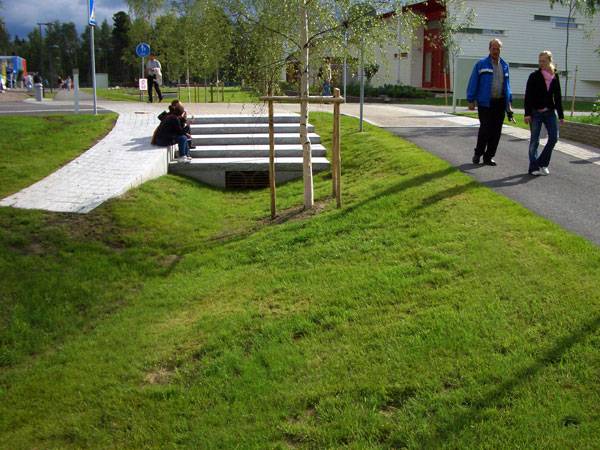
Toppilansaari Park. Photo credit: Atelier Dreiseitl
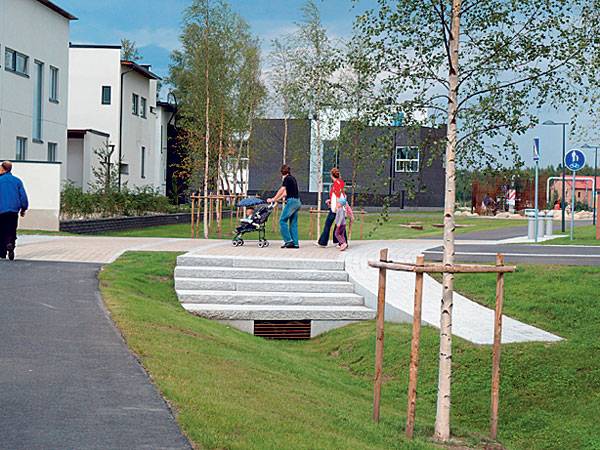
Toppilansaari Park. Photo credit: Atelier Dreiseitl
Full Project Credits For Cemetery de Laroque des Albères (France)
Project Name: Toppilansaari Park Location: Oulu, Finland Landscape Architects: Atelier Dreiseitl, member of the Ramboll Group Team: Herbert Dreiseitl, Dieter Grau, Stefan Brückmann, Ulf Glänzer, Jessica Read Area: 75 ha/185 acres Client: City of Oulu Completion: 2005 Website: www.dreiseitl.com Recommended Reading:
- Urban Design by Alex Krieger
- The Urban Design Handbook: Techniques and Working Methods (Second Edition) by Urban Design Associates
Article by Velislava Valcheva Return to Homepage
Published in Blog


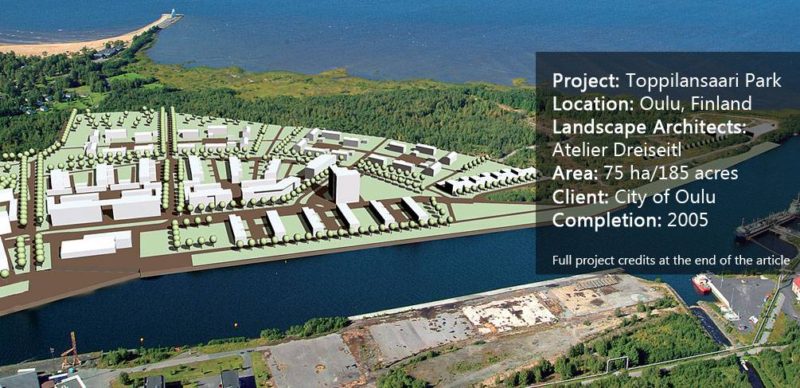

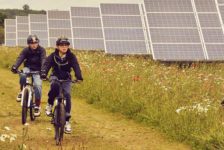
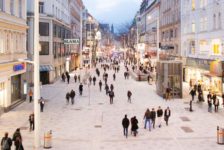
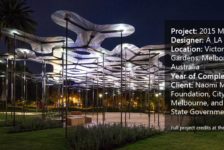
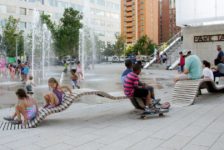
![Deep Collaboration: Ecology, Research, Design [Video]](https://land8.com/wp-content/uploads/2018/05/stephanie-carlisle-224x150.png)
